If you're reading my blog, then you probably know that worm compost tea is great for your plants. I want to make a distinction though: worm compost tea vs. worm bin drainage.
In my mind, worm compost tea is distinctly different from the liquid that drains from some bin designs (what I call worm bin drainage). Worm compost tea is made by separating the vermicompost from the worms and steeping the worm compost in water to make a tea. My website has complete instructions for brewing up your own worm tea: 1# of vermicompost in a 5 gallon bucket of water. I don't mean to say that the drainage from a worm bin would be bad for plants. From what I have read it is great fertilizer; however, I'd be concerned about putting it on edible veggies because you do not know what is in it. I have also found a variety of different reports on how to use it ranging from straight (undiluted) to diluted to the color of straw. If I were to use this on salad and other greens I probably diluting it to straw color and bubbling air through it for 12-24 hours using an aquarium bubbler. If anyone has experience using worm bin drainage, I'd love to hear how you prepare it for use. Cheers, Mark Originally published on October 8, 2009 I thoroughly enjoy meeting other vermicomposters (new and old). While I do mail worms, I prefer to meet people who are buying from me. This saves them money and allows me to spend a few minutes educating so they get off to a good start.
When I started WormMainea, I assumed those who visiting my site and contacting me would be a narrow portion of the population, Essentially, people a lot like me: frugal, eco-minded people looking to experiment with a different way of composting that allows you to compost inside in the winter. Well I got it completely wrong! I meet all sorts of interesting people ranging from back-to-earth retiring hippies who want to vermicompost again to apartment-dwelling professionals who want to reduce their waste, from former Everest climbers to college students, from monks to manufacturers of skate-chic clothes, and everything in between, including some frugal, eco-minded composters like me. I am continually amazed by how many people are interested in vermicomposting and the cross section of the population that contacts me. I enjoy talking with them about how they found me and how they became interested in vermicomposting. Cheers, Mark Originally published on October 3, 2009 I really enjoy teaching vermicomposting to school children. Their excitement is wonderful, and some of the questions catch me by surprise.
Another observation by teachers has also caught me by surprise: several teachers, especially younger grades, have reported back that after my vermicomposting demonstration and the arrival of the worm bin there has been a change in the snack diet of the classroom . Children want to participate in feeding the worms. However, only some food can be placed in the worm bin (e.g., remnants of fruits and vegetables and NOT processed sugary or salty foods), so children who want to feed the worms must bring in fruits and veggies. Who would have thought vermicomposting would make children eat better?! Cheers, Mark Originally published on September 28, 2009 The answer is: you don't!
Aside from the gut wrenching fear of recovering an item that has fallen in there with your hand, garbage disposals are very wasteful. A worm bin and outdoor compost pile make this common household appliance unnecessary. Everything that goes in the disposal can go in your worm bin or your outdoor compost pile. Some people call their disposal the "pig". Likely, because the disposal takes the place of the family pet pig that would eat the food waste. Vermicomposting is much slower than feeding a pig, but worms are far more manageable for keeping indoors. Did you know: disposals use about 500,000 gallons of water per day in the United States (both in your sink and during sewage treatment). Food in the garbage disposal goes to water treatment facilities, and from there into the environment where it's at least three times more likely to disrupt ecosystems (via algal blooms) than it would if it went to a landfill. (Not that it's so great there either...) Food scraps make up at least 10% of space in our landfills and off-gas methane, a greenhouse gas. Through composting a typical household can keep 500 lb of biodegradable kitchen and garden waste out of landfills every year! That is per home!! Do you feel empowered? I do. Feed your soil, not the sewer or landfill. Cheers, Mark Originally published on May 3, 2009
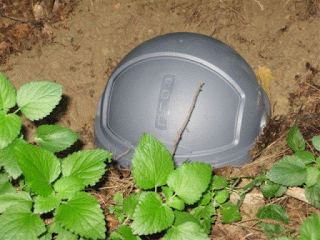 It never fails. With the retreating snow, frozen dog poo is revealed in my yard near the sidewalk. You'll find this also at the beach. I understand this is not always controllable and forgive the owners who forgot to bring a bag. I don't have a dog, but I sympathize with owners who have to clear the yard in the spring. The typical dog produces more than 200 pounds of waste each year, according to the USDA's Natural Resources Conservation Service. What to do with it? There is a solution, and I don't mean entombing the poo in a plastic shopping bag. Of course, the solution involves worms! When it comes time to pick up after your pet, plastic shopping bags are bad options. If you choose plastic, you are wrapping something that degrades quickly in something that takes decades to break down. Instead, use sturdy paper, or plant-based biodegradable bags. The corn-based BioBags, for example, are certified by the Biodegradable Products Institute to break down in a matter of days (in industrial landfills; probably longer in a home compost pile). If you chose to compost your pet waste,you should have a separate compost pile for pet waste, and you should not use the resulting soil on anything edible. As always, you want the compost pile to be HOT. The best practice is to ensure optimum temperatures is through layering and turning. Or you can use worms... The best solution (in my opinion) is to collect the poo in a bag (paper or biodegradable) or with a shovel and use it to fertilize your lawn (ensuring it is never used for food). Essentially you are vermicomposting dog poo outside in the ground outside with a fancy cover. You can make your own a poo-doo vermicomposter to put on your lawn. You dig a hole in your lawn and insert a roll-top garbage can with the bottom cut out. Fill the hole half way with bedrun worms and it is ready to go. Be sure to place it away from low-lying areas of the lawn. When it is nearly full, dig another hole, remove the garbage can and start again. You can cover the old hole with the sod you dug for the new hole or new grass seed. Like the grass near the septic tank, it will be a lush spot in your lawn. The response on this has been great from people using it. It makes so much more sense than sending it to the landfill. If you have worms, you can do this in about an hour with a cash outlay of <$20 to buy a container with a cover (like the Rubbermaid bullet 2 gallon roll top can) that will last for years. Try this in your yard and let me know how it goes. Cheers, Mark Originally published on April 4, 2009 If you read my solar hot air blog (that sounds funny!), you may have noticed that we replaced the siding and windows on our home. We needed to replace the windows (to more energy efficient models), repair some water damage, and replace some of the damaged siding. Unable to match the color, we elected to replace all of it. When we got our quote, it included dump fees for disposing of the old windows and siding.
I am frugal by nature, so I had an idea: maybe someone would want some the windows and some of the siding. I thought this would avoid sending it to a landfill, and save both me and the recipient a few bucks. So I listed these for free on Craigslist. It took me all of 15 minutes to post what I had. The response was INCREDIBLE. The windows were snapped up within a day or two of removing them. And the siding is now gone, too. Instead of going to a landfill, ALL of it is being reused or re-purposed . The people who came have been happy to get it for nothing and I am happy to have it gone (without sending it to the dump). Before you throw something away, consider listing it for free on Craigslist. You may be surprised how many people want it. Cheers, Mark Originally published on March 28, 2009 I realize that some of you who purchased in the fall processed last weekend when temps in Maine were spring-like. My garden is still under about 2 feet of snow. Many contacted me to ask: what do I do with 15+ gallons of worm castings in March?
Worm castings can be stored in a container like a worm bin. Keep them moist and let the castings breathe (remember that the castings are alive!). You don't want to let the casting dry out if you're going to make great tea (active organisms plus nutrients). Most recipes for tea call for about a pound of castings in 5 gallons of water (dilute to 10 gallons to use). Castings stored this way will keep for several months-- just in time for real spring! In the interim, use what you have to make tea for your houseplants or soil amendments for seed starters. Just remember that your vermicompost may be full of viable seeds! Tip of the hat to Bruce Deuley for his valuable contributions to the procedure. You can get the brewed vermicompost tea directions here. Cheers, Mark Originally published on March 14, 2009 |
Mark FollansbeeVermicomposting and beyond! Check out what I've been up to on my blog. Archives
February 2023
Categories
All
|

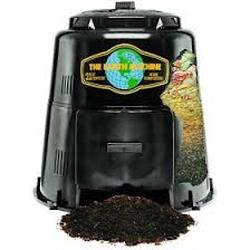

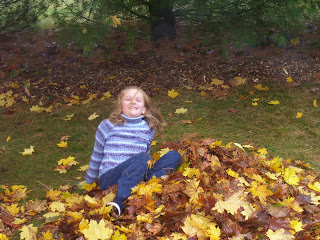

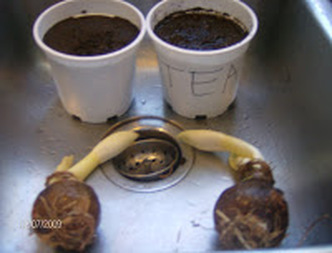
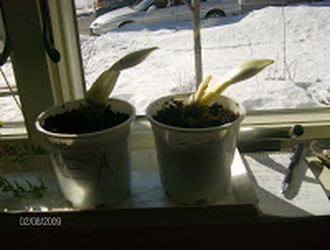
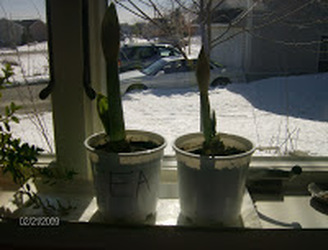
 RSS Feed
RSS Feed

